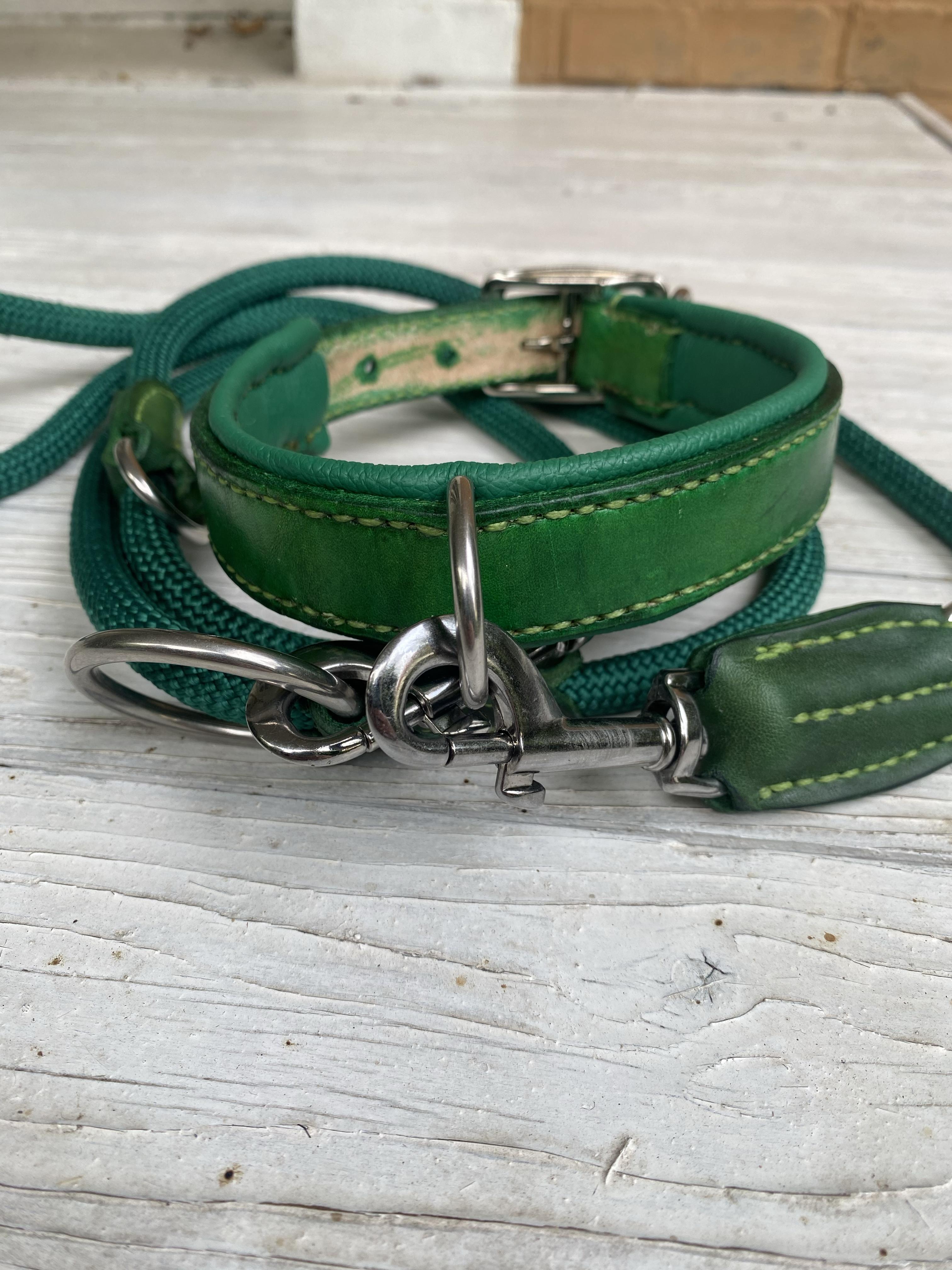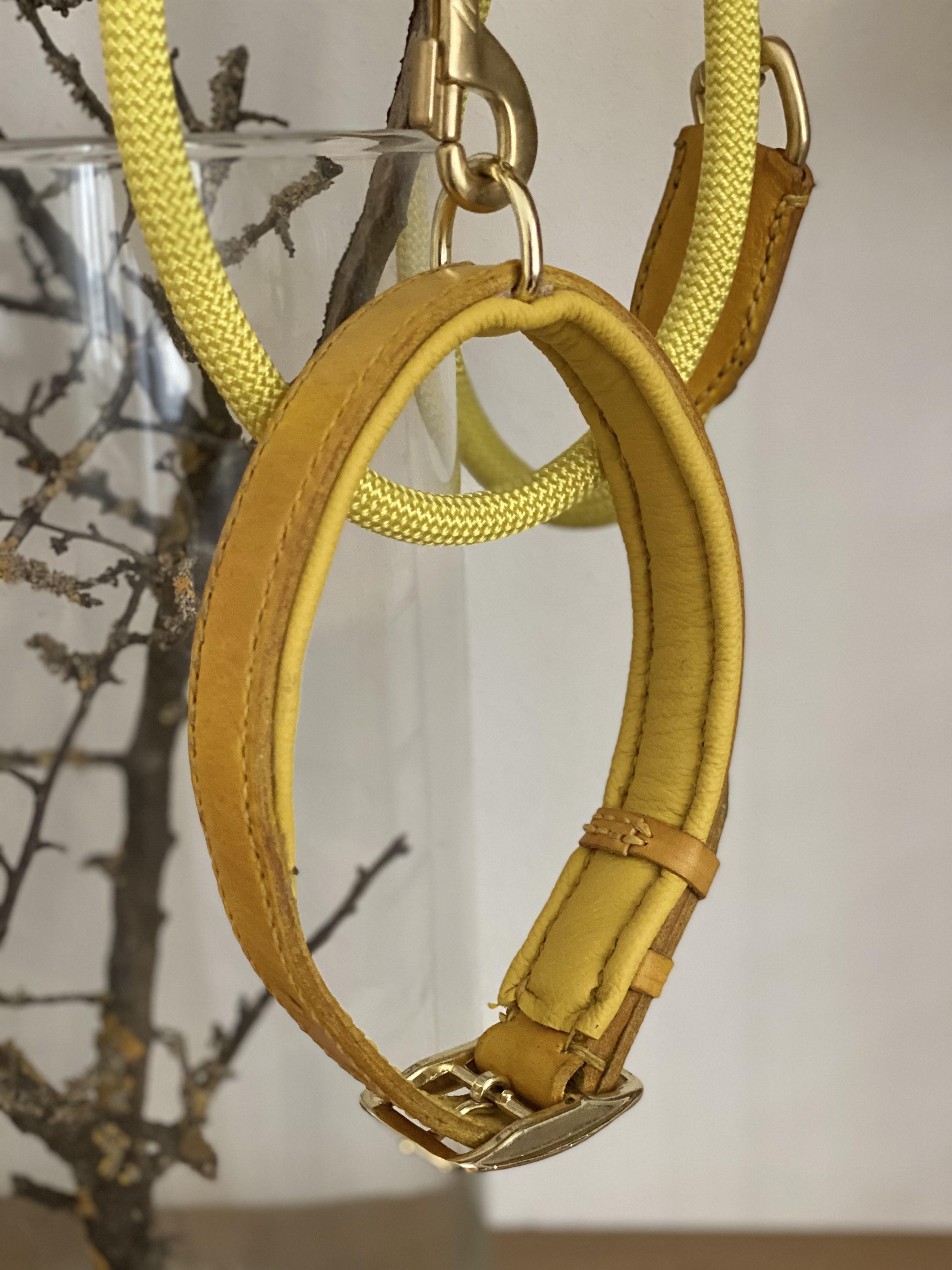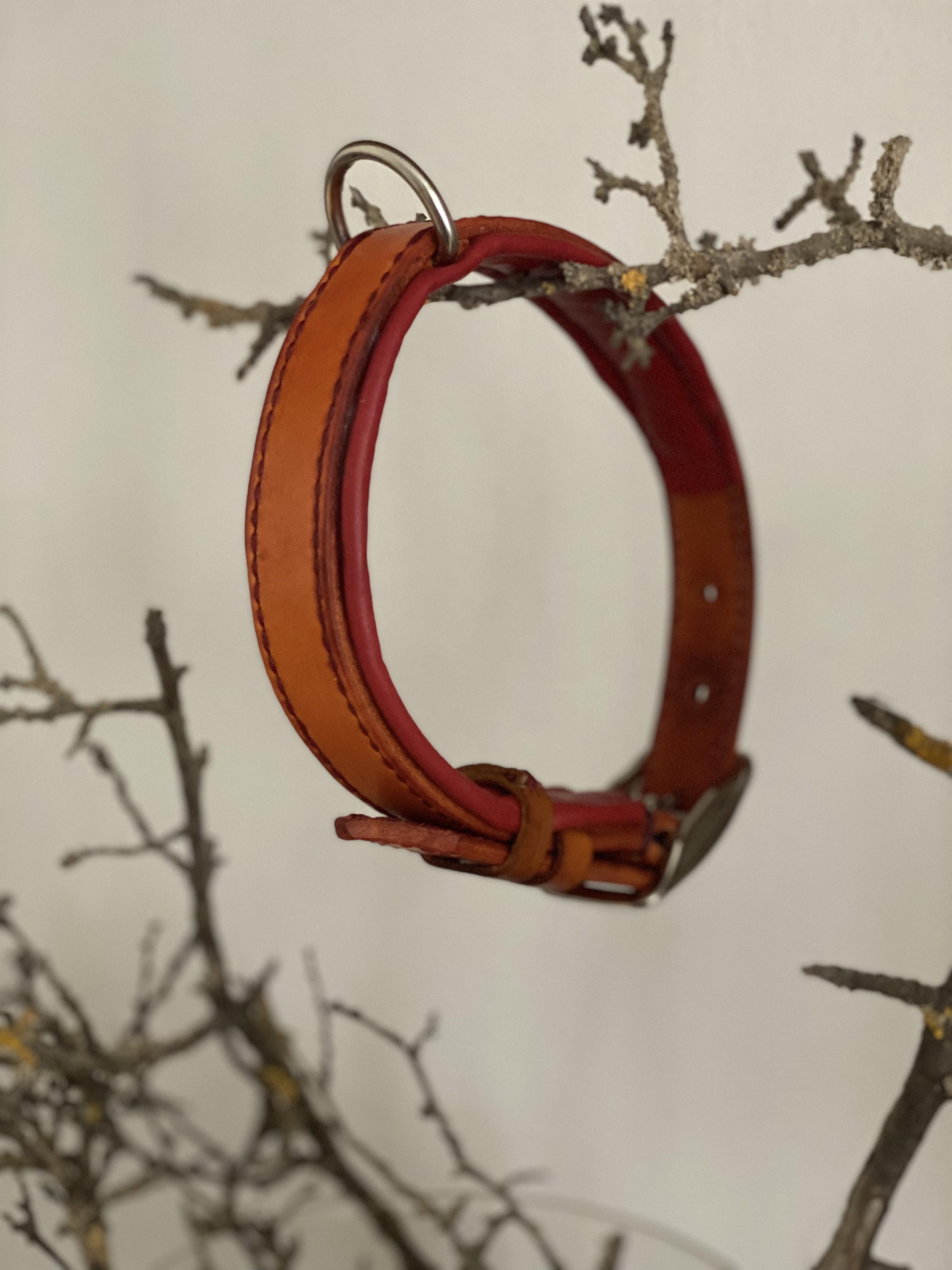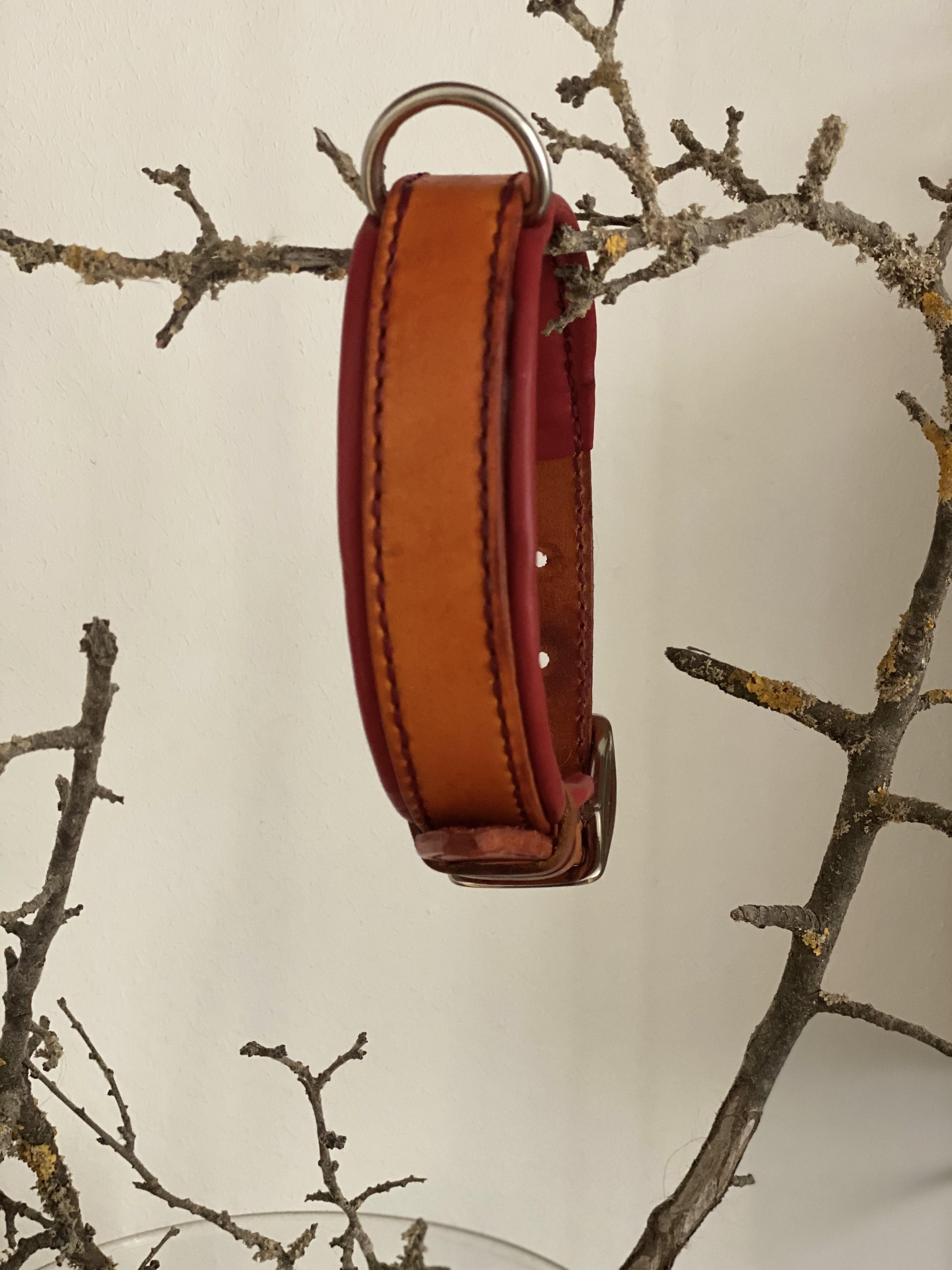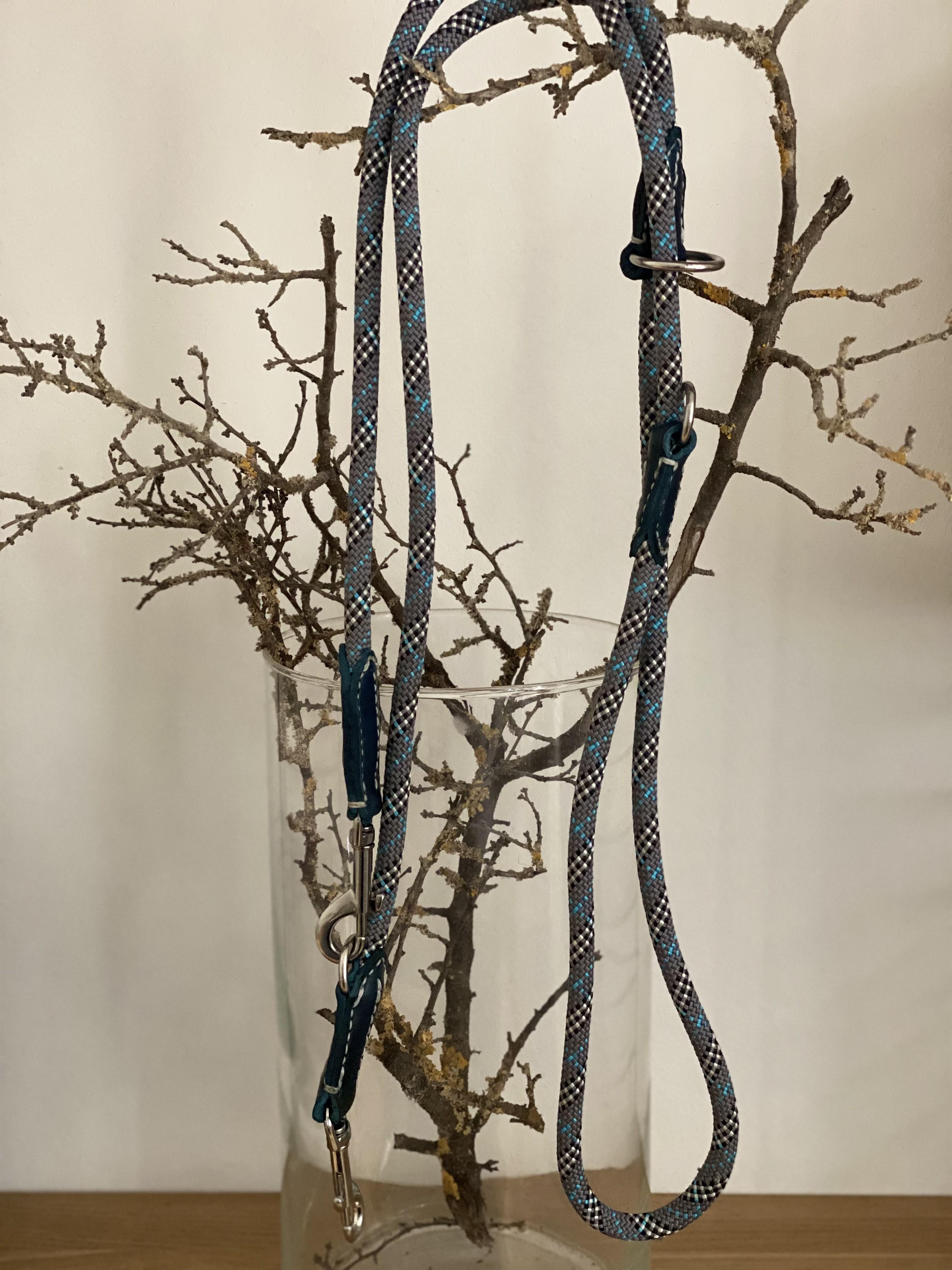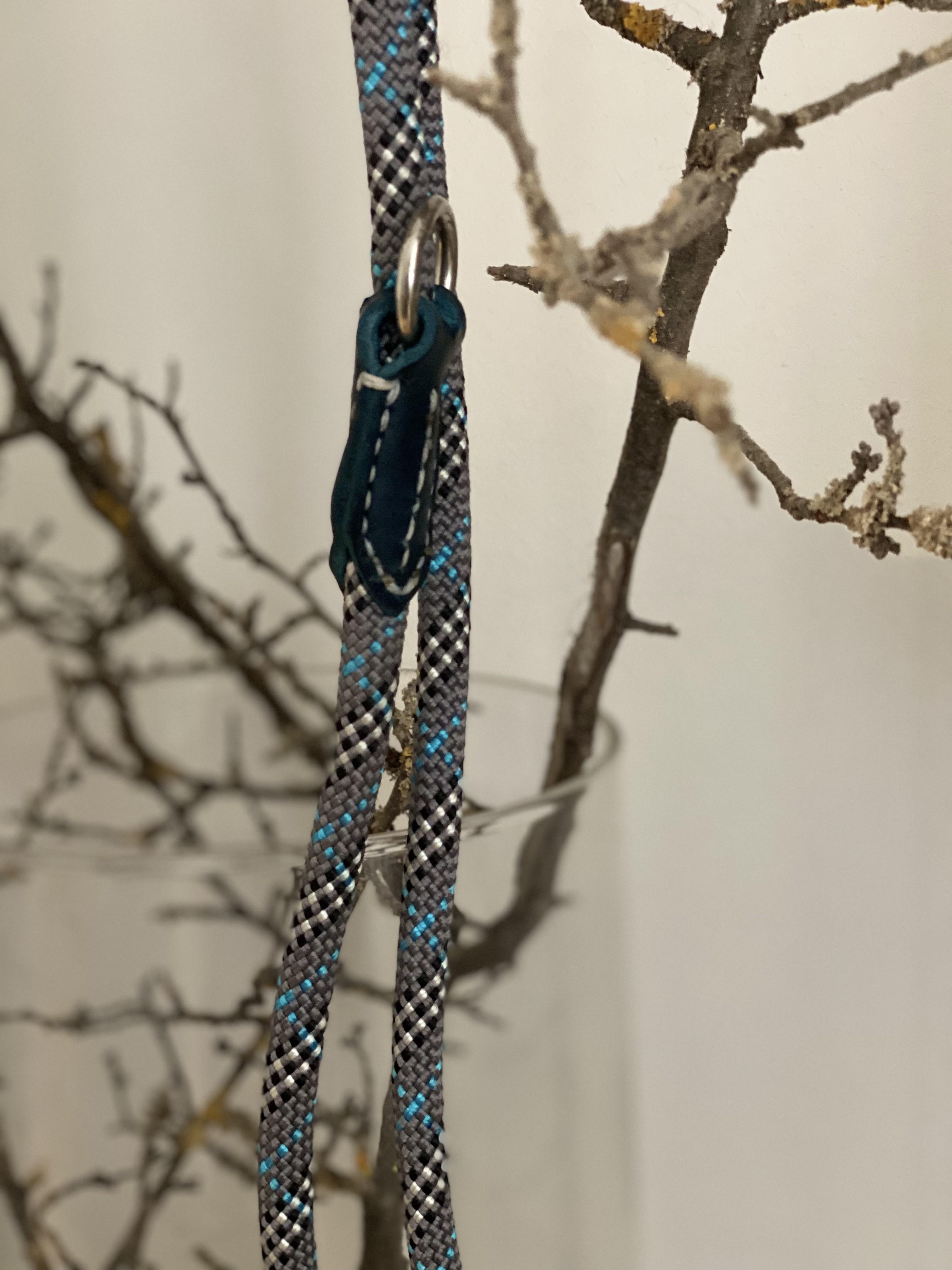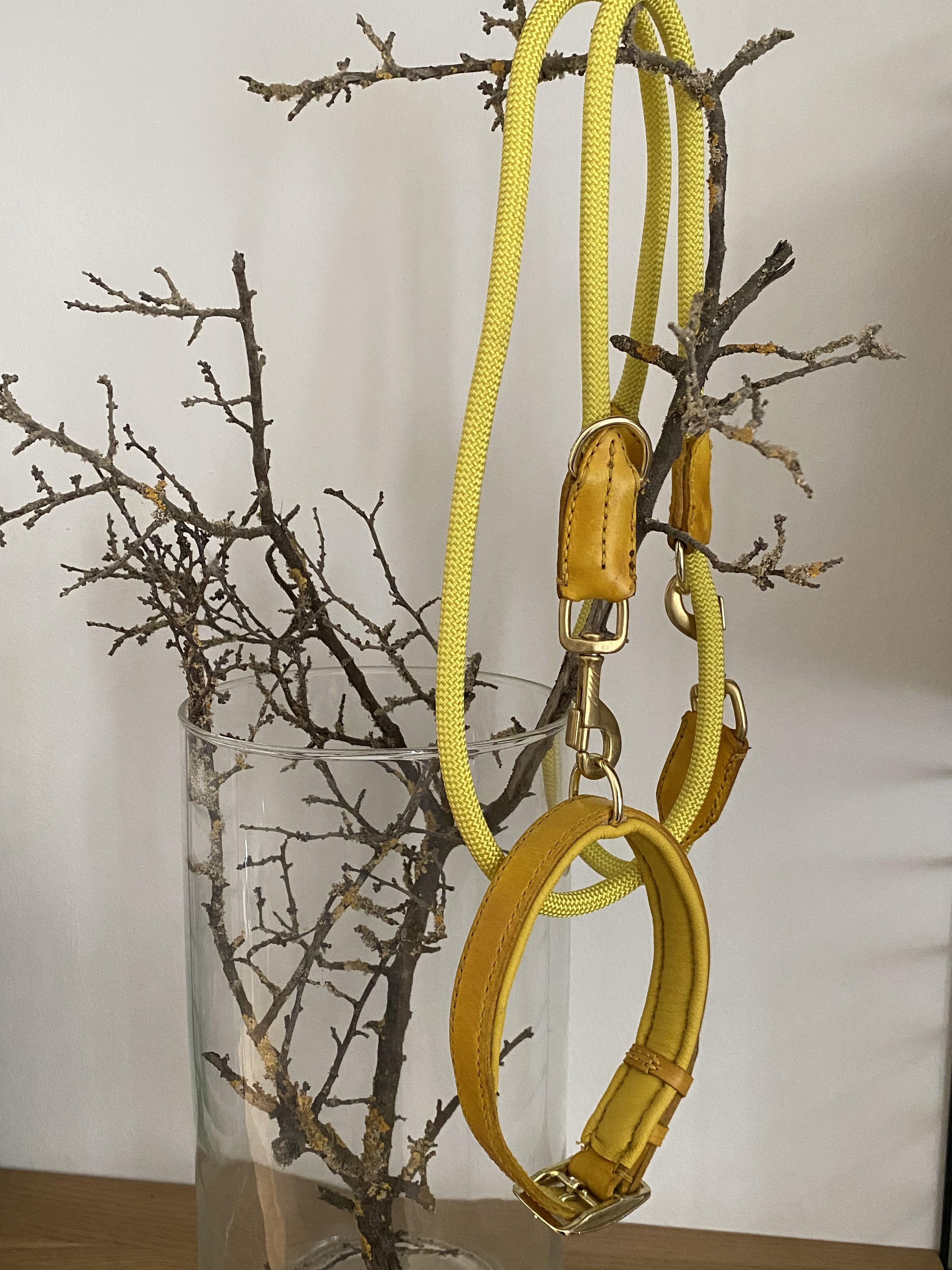-
Posts
34 -
Joined
-
Last visited
Content Type
Profiles
Forums
Events
Blogs
Gallery
Everything posted by Tove09Tilda
-
I get the fear! Starting a business is scary, especially when R&D feels like it’s draining time and money. But here’s the truth: A/B Testing ≠ Huge Stock You don’t need shelves full of products. One prototype, a couple of good phone photos, and you’re ready to test. Especially if you want to test on social media! A/B testing is about interest, not inventory. Perfect for handmade. R&D Isn’t Wasteful — It’s Smart Every business, big or small, starts with prototypes. Sharing early versions, showing the process, or testing reactions isn’t lost effort — it’s efficient. R&D teaches you what will actually sell. There are no shortcuts, and there shouldn’t be. Stop Comparing Handmade to Cheap Imports Mass-manufactured and handmade are two different worlds. Different markets. Different expectations. Different pricing. If you keep attracting people who don’t value handmade work, the issue isn’t your product — it’s your branding and targeting. If People Don’t Care About Your Quality, You’re Aiming at the Wrong Crowd! Handmade was never meant for everyone. So don’t try to sell to “everyone.” It won’t work. How to Define Your Actual Customer Create a clear profile of your ideal customer, like a blue print: Who are they? How old? Income? Style? What do they value? Why your product? Where can you reach them? Example: Luxury Handmade Leather Dog Collar Let’s say you make a premium Italian leather collar with brass hardware. Your customer? Women 25–30 who love luxury fashion. They hear “Italian leather,” and instantly think of designer handbags. They earn 45–50k a year. They want aesthetics, exclusivity, status — for themselves and their pets. You’ll reach them on Instagram, TikTok, and through boutique-style soft launches. They aren't bargain hunters. They want a vibe. Position Yourself Smartly Look at brands in your space and map out the market. Find where you fit — and where you stand out. Your personal USP, if you will. Branding Matters More Than You Think Handmade brands collapse not because the products are bad, but because their story is bland. Have colours. Have a logo that means something. Know your story and say it with confidence. People buy a feeling, not “just a collar.” Tell a Better Story Example: Weak version: “My granddad gave me his watch, strap was broken, I made a new one.” Stronger version: “When I was sixteen, my granddad gave me his watch. I adored the man. When the strap broke, I couldn’t find anything worthy of it — so I made one myself. It fit perfectly. Friends started asking for the same. That’s how this all began, and I still love creating pieces that make people light up when they finally get the strap they’ve dreamed of.” Same facts. Completely different emotional impact. And yes — follow-up matters A simple personal message a month later with cleaning tips or care advice? A small newsletter with new products and maintenance tips? Or at Christmas fairs: offer gift wrapping for a small upcharge in simple paper in your brand colours, sealed with a cheap sticker that carries your logo — instant “premium” feel and almost free advertising. There are so many options. The more personal and creative, the better — and none of it has to be expensive. A sheet of stickers costs what, here in Germany maybe 10€ for 500 pieces? Set a tiny marketing budget and actually plan with it. Small, thoughtful touches go a very long way. That’s how you turn a one-time buyer into a loyal fan who recommends you to everyone. If you still have questions about any of this, feel free to message me. I’m happy to point you in the right direction. ☺️ Best, Tove
-
Oh, this is exactly my kind of question! Certified business consultant here 😉 A/B testing is your best friend — whether online or at fairs. How it works Create a small batch of Product A (e.g., watch straps) and Product B (e.g., journal covers). Photograph both well. On social media If you use Meta Business Suite, you can even target different groups. Show Product A to Group A, Product B to Group B. Let the test run for a few days up to a month, then compare: likes comments link clicks profile visits Whichever product generates stronger engagement is the better performer. This method is often more reliable than fairs because the data is cleaner. At fairs Best if both fairs are in the same region. Bring slightly different assortments each time — more of Product A at one fair, more of Product B at the next. Compare: actual sales total revenue which product attracts more conversation or attention You can A/B test pricing too Announce Product A at Price X (production cost + 40% raw profit) to Group A, and Product A at Price Y (production cost + 56% raw profit) to Group B. Check the same statistics as above plus any DMs or inquiries. It’s an easy way to find your optimal price point. Don’t forget the math When you evaluate a product line, include: production time (based on average hourly wage in your area) material costs packaging share of workshop rent tool depreciation (please don't forget that! Most hobbiest do and it's simply undermining the value) insurance booth fees (for fairs) + costs to get to fair (fuel etc.) percentage of profit cost of storage Calculate how many units you must sell just to break even. Then look at how realistic that number is within your usual sales cycle. That alone often reveals whether a product line is worth pursuing. Despite that also consider if things can be bundled or cross sold, e.g If a person buys a watch strap, do they buy a matching belt? If so - make a bundle (a watchstrap and a matching belt together for production cost plus 45% profit so slightly cheaper together in a bundle, than as two seperatly chosen products, also advertise it as a great deal (even if it's not)) or at least a cross sale offer (the belt is suggested when someone looks at watchstaps or simply place the somewhat matching belts close by at your booth, that they are in eyeside together). Selling is simple psychology and not magic or high profile science you need countless degrees for, make use of it! Hope I was of help, Best Tove
-
Hey JDFred, Coming from English saddlery but having ridden plenty of sporthorses in side pulls, I’ll just flag one thing first: true bitless side pulls never include a bit, so double-check whether the bridle you’re copying is actually a side pull in the traditional sense. About the rope noseband: rope can be quite severe depending on thickness and how the bridle is fitted. Thinner = harsher. A double-rope noseband looks nice, but for a genuinely bitless setup I’d think carefully about comfort, pressure points, and avoiding nerves, vessels, and airflow areas. Bitless absolutely needs good fit and thoughtful construction. I looked at the Weaver version — the construction is simple and easy to adapt for a made-to-measure fit. The two-piece crown connected by loops wouldn’t be my first choice for bitless. I’d switch to an anatomical crown with proper tongues for the cheekpieces and a clean buckle setup for the throatlatch. It distributes pressure better, has a more stable fit, avoids hot-spots, and lets you disassemble the whole bridle easily for cleaning or repairs. Plus you can tool it and make it look extra special and pretty for your mother-in-law. The browband seems optional in their design, but adding a V-shape, U or straight keeps things stable and makes the bridle look intentionally built, not improvised. I personally would, lookwise go with a V-shape as it is something slightly different and kind of special. Noseband: For each side: cut one wider strap (matching the crown attachment width) and two shorter, narrower straps to attach the noseband. Instead of tying rope directly to O-rings, I prefer attaching rope to leather: thin both ends of a small strap (half thickness, about 1/2 to 1 (British)inch), sandwich the rope, stitch through the center, then attach that piece to the cheek section. Add the O-rings at the midpoint for the side-pull action, and a small buckle strap underneath to fine-tune the noseband fit. Yada yada … you know the deed. This gives you a cleaner look, better stability, and avoids bulky knots. About your leather choice: Harness leather is great for headstalls and heavy-duty tack because it’s strong, dense, and heavily stuffed with oils and waxes. But for a full bridle — especially something bitless where pressure distribution matters — bridle leather or dorsal generally performs better. I heard it's hard to come by in america, due to more and more tanneries closing down (?) but I would at least give it a try, Bridle leather is smoother, more flexible, takes edging beautifully, and breaks in comfortably on a horse’s face. Dorsal leather is even firmer and extremely stable, ideal for pieces that shouldn’t stretch. Harness leather, while durable, can be a bit stiff across sensitive areas and doesn’t contour as nicely around the nose and jaw. So: harness works, bridle leather works better, dorsal is excellent if you need maximum stability. Measure the horse, mark the key anatomical areas to avoid, and from there the whole bridle comes down to thoughtful strapwork. I hope I was able to help and give some ideas, Best Tove
-
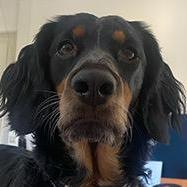
Reommendations for Getting into Saddle Repair
Tove09Tilda replied to Samer's topic in Saddle Supplies, Tools & Trees
Hey, as BlackDragon has already pointed out, saddles are a sensitive piece of equipment. The idea of toring saddles apart is nice, but also try to get your hands on books and stuff by Jochen Schleese and saddlefit for Life to understand the basics. I really never get tired of recommending Schleese (also the saddles, as well as Albion), as he has great insights into: 1. saddles and why they have to be constructed as they are 2. Biomechanics and why a saddle has to fit a certain way 3. The work of a saddler (he was trained by Passier and Sohn but now lives in Canada) And believe me, you need those things to understand saddlery and therefore how to repair things. If you want to learn the basics, there you get a very good foundation, so you can offer a real benefit to your customers. He also writes in some articles about western saddles and what to take into account for them and why don't fit every horse, despite most saddlers (at least here in Germany) trying to make them work on every horse. I can't say much about Stohlman and Gonzales, but they seem to be great for observing how it is done. Schleese, gives you the why it is done in accordance with science. As a scientist and a soon to be saddler apprentice, he is my best weapon and also helped me to prepare for my upcoming try outs, so I can ask informed questions instead of dumb ones. Best Tove. -

What are some tools that changed your leatherwork?
Tove09Tilda replied to Kenzi's topic in Leather Tools
My quatermoonknife by a swiss knife factory - forgot the name and am too lazy to check. I would by now probably rather buy a Solingen Pik Ass, as they are cheaper here (and are supposed to have superior Quality) also I live somewhat close to Solingen. But since I own that knife and especially learnt how to use it, my leatherwork became much more intricate and life so much easier! -

Internship and maybe a new start
Tove09Tilda replied to Tove09Tilda's topic in All About Us and Off Topic
Oh wow, what an amazing story! That’s, by the way, also what I love about female entrepreneurship. It’s so often born out of necessity and the environment these women exist in (Ekensmith, 2017), and ends up being so much more than meets the eye. To me, those women are the real heroes! They deserve far more recognition (and funding… looking at you, Friedrich Merz, for cutting so much start-up support in the name of “kickstarting” the economy)! I'll try to keep my fingers intact! 😂 So far I only heard very good things about the company. It is what it is … I'm a certified Business Consultant, that's somewhat of a rarity, especially here in Germany. So I can't really be mad, when people don't get why you need to be certified in order to consult businesses. I guess on that end, there is also a lot of unwillingness to recognise the benefits and the therefore misfit of 90% of the other people working at the consulting firm. Plus, probably the biggest problem, I still have 6 - 9 NDA's running and can't talk about the most fun and hugh projects I did, while studying. I'm so sad about it, as OMG they were sooooo cool! What did your sister end up doing? What a waste! I don’t even want to imagine how many brilliant ideas were lost because men told women they were “amazing at the typewriter.” 🙄 What if someone had said that to Marie Curie, Hedy Lamarr (not the best example, I know), or Elizabeth Arden and they’d actually listened? -
Uhh! That sheath looks like it's going to be a show stopper at any LARP event. Nice work!
-

Internship and maybe a new start
Tove09Tilda replied to Tove09Tilda's topic in All About Us and Off Topic
Oh Sheila, that sounds really too familiar! It's a men's world, we are just allowed to exist in it as it feels. Some time ago, I used to be furious about it. Now I just shrug and say, “As long as no man kills me, it’s fine.” It’s dark humor, but honestly… it’s survival. In my field, it’s insane how you can be highly qualified and still not get the job, while a man with barely any qualifications — just a few more month of experience in any field, but yours — gets hired easily and then looks at you like you’re crazy for even daring to apply. I’ve beaten McKinsey consultants in practical exams, but none of that seems to matter anymore. Instead, people get angry that I refuse to work for free. So really, changing careers just feels healthier — especially considering how the political climate here in Germany is shifting. And thank you for sharing your story! And glad you found your place as a nurse! The Dr. Best story sounds amazing and inspiring. I can totally understand why you would have loved to do this permanently. My best story is probably working with THE family business consultant and scholar (he loves! like really loves, alpro chocolate milk and is the most chill Italian guy I've ever met! Plus had the craziest stories form sitting in family boards) and being told by an Ex-Wallstreet Broker, that he thinks I'm highly talented (best about that: A McKinnsey Consultant heard that and was sooooo goddamn mad at me, she really showed her "best" character" 😂). Since then, I can't take any McKinsey Consultant seriously for life of me. -
Hello guys, I thought as I have nowhere else to share this and it might be appreciated here, I'd post it. Three weeks ago, I applied to a very well-known (not allowed to say which one) saddlery here in Germany for an apprenticeship. At first, I was hesitant — starting again from zero with two higher education degrees is scary! Especially after being told (and basically lied to) for years that a degree in economics would secure my future. Well… times have changed since I got my master’s degree last year. After a year of grinding my teeth, sending out endless job applications for any position I could find, getting only one interview, and being ghosted over 500 times — I was done. My chronic depression was acting up again, the worst episodes I had in years. One following the next. My options were: A - Leave Germany and never come back (which the job center actually suggested - one problem less in their book), or B - Change careers completely, despite not having had the chance to work in my actual career since finishing my degree (fun fact - I've even won a prize for a concept 😆) After some serious thinking, I realized a career change might be for the better. The final nail in the coffin was when a psychologist told me I should “get married and have children” because I’d studied for a job I’d only get if I had a family — or if I were a man. That was the moment I accepted that finance and consulting might not be for me or just as a hobby — at least, in this society. So, what was left? Passion. Don’t get me wrong, I love helping emerging companies succeed, and I’m passionate about female entrepreneurship and family business consulting — but let’s face reality: I’m a woman in my mid-20s. I’ve always had a deep love for leatherwork. Saddles have fascinated me for as long as I can remember — and don’t even get me started on bridles! So when I saw that this company was still looking for an apprentice, I just sent in my application: CV, degree, motivation letter, and a detailed portfolio. I was terrified. The last saddlery I applied to (after a boring PhD seminar that had me reminiscing a lot) had sent me a very "kind" rejection. So I expected the usual phrases like: “We had more qualified applicants” or “Thank you for your application, but we had too many.” But instead, something almost magical happened — I was offered a two-week internship to see if we’re a good match. No “you’re overqualified,” no “another failed academic.” Just a kind invitation, a start date in January, and a short list of what to bring and where to stay. Never in my life did I think I’d be so happy about an internship! Getting this chance means the world to me — even if it doesn’t work out. Just being given the opportunity for a new beginning, and not being treated like a problem for once, feels amazing. I was also informed that I’m not allowed to share anything about the saddlery online, especially during my stay, since they own several patents. That’s fine by me — I’m used to NDAs from working with companies during my master’s. (Fun fact: when you hire a consultant, you always let them sign one because of sensitive data!) They can hand me one, and I’ll gladly sign — though, of course, I always read before signing 😆 I’m just beyond excited to get a glimpse into the professional leatherworking world — and maybe even meet my master along the way. Until January, I plan to level up my leatherworking skills as much as I can. In start-up consultancy, we say: “A raw diamond is perfect because you can shape and sharpen it — until it either breaks or becomes a jewel.” That probably applies to apprentices too, but I still feel like I want to be of use right from the start. Sorry for the novel — and to anyone who read the full story: thank you! ❤️ Feel appreciated!
-
Tom, if they ship to the US, Sprenger might have what you are searching for. https://www.sprenger.de/collections/geschirrbeschlage They usually have everything you need for Horsebridles, Harnesses and even some saddle parts. Quality is really superior!
-

Choosing durable dog collar thread... linen, Nylex etc...?
Tove09Tilda replied to LakeOtter's topic in Sewing Leather
First of all, thanks for the mention! Even though I don’t do tooling myself and mainly focus on English-style leatherwork, I thought I’d share a few points that might be useful. I work almost exclusively with an adjustable creaser, a saddler’s compass (or “circle”), and pricking irons (French style) or overstitch wheels — the latter being very common and easier to get here in Germany. One important thing to consider, especially when making gear for larger dogs, is: avoid diamond chisels. There’s a great explanation by Nigel Armitage in the pricking iron review thread (I’ll link it when I find it). In short — pricking irons and overstitch wheels are marking tools, not punching tools. They’re used to show where your awl should enter the leather. You only pierce one hole at a time, which allows the leather to swell back around the thread, creating a stronger, cleaner, and more traditional stitch. Also, about needles — don’t go for the cheapest ones. With 9 oz leather (around 3.5 mm, right?), you’ll occasionally need pliers to pull them through. My long-time recommendation: harness needles. They’re reliable and made for heavy work. And don’t forget beeswax! Even if your thread is pre-waxed, re-waxing from time to time helps a lot. Beeswax has been one of my must-haves ever since I started leatherwork at 14. If you want flat stitches, tap them gently with a soft mallet or use a thread roller — one of my favorite tools lately. Personally, I’d say 5.4 mm spacing is quite large. My old 4 mm irons already produce a fairly wide stitch pattern, which can look unfinished depending on the project. Outfitting your workshop is definitely challenging in the beginning — I’m not exactly looking forward to how my toolbox will expand once I start my apprenticeship! You really do need some disposable income for this craft, but don’t be fooled — you can skip a few “nice to have” tools in the beginning. Also invest into a good awl and figure out which one works best for you and also try different handle sizes. I have very nice (good quality! No breakage in over 10 years) Osborn ones, which make my life actually harder, as I have small hands with long slander fingers, but still not enough space for the handle, when stitching. I'm planning to buy at last one smaller flatter one pretty soon, so that my stitching becomes faster and my master (whoever that will be) has one thing less to complain about. I personally switch between diamond, sword and round awl almost all the time, with diamond being my favourite and already 4 destroyed blachard sword awls (ups … shall not be, I think!). I started off with a round awl and added the others over time. Remember, awls - just like your knives - need regular sharpening to stay efficient. You might want to try overstitch wheels first before investing in more pricking irons. They’re much cheaper, come in a variety of sizes, and help you figure out what stitch length fits your projects best. It takes some practice, but if you’re grooving, they’re actually very easy to keep straight since they can’t roll off line easily. Have fun — and yes, stitching, thread, saddle stitch, and everything connected to it really is a rabbit hole! Here in Germany, it’s even part of the exam when you become a certified saddler. Best, Tove -

Blevins buckle oxidation
Tove09Tilda replied to BlackDragon's topic in Saddle Identification, Restoration & Repair
Wow! Okay, that looks like… something … Just asking as I am only used to english saddles, for what are those buckles used? I've never seen anything saddle-related that oxidised only some rusty head-irons which were replaced and since used for schooling purposes. -
Hey Jonas, Thanks for your input! I actually prefer a stronger and more stable build for her, which is why I opted for 3.5–4 mm leather. I wanted a thickness that’s sturdy enough to provide a reliable fit and hold up over time, especially since her current nylon and neoprene harness is way too soft for that. The thickness also allows for padding without compromising durability. For mounting, I’m planning to use steel roller buckles in combination with looping. I’m not a fan of clips or Velcro. I also want the chest strap to be replaceable, so it can be adjusted if she becomes wider as she ages. We experienced that with our Spaniel, she grew wider again when she turned 10. I want this harness to be for life, not just a few years. ☺️ Best Tove
-
Hello Leatherworkers! I’m reaching out to those with more experience in English saddlery than I have — I need some advice! My dog needs a new harness. Sounds simple, right? But it’s turned into quite the project, and I wanted to share my approach to see what others think. About my dog: 2 ½ years old, medium-sized (~40 cm shoulder height, ~20 kg) Very fine-boned, which makes fitting tricky Her current harness is always too short. No matter how I adjust it, it slips over her shoulders and restricts her movement. She mostly wears it for nose-work at hunter dog school (long-leash) or jogging with us, but I just can’t settle for “good enough” — she deserves a harness that fits properly. Today, I approached it like I would saddle fitting — I even chalked her up! Yes, I literally drew on her shoulders. To understand how movement affects the fit, I lifted each front paw one at a time and marked where her shoulder blade sits in each position. That showed me how the surface between the shoulder blades shrinks as she moves — finally explaining why most harnesses rub or slip. Her shoulders are steeply angled and quite flat, and there’s very little surface between the blades — about 1" to 1 1/16". Because of this, I think I need to build a bit more room in the front so the harness doesn’t rub. Her back is straight, so I can safely use plastazote (6 mm) padding. If she were more overbuilt, I’d use a flocking system like in saddlery to ensure proper pressure distribution. Her back is long, and she’s had back problems before, so I can’t extend the harness beyond the widest part of her ribcage plus about an inch for padding under the D-ring. My current plan: Y-harness with padding under the back strap, shoulder straps, and chest strap Two D-rings: one near the shoulders, one at the end of the back strap Leather: Italian harness leather (double butt, 3.5–4 mm) Padding: 0.4 mm calfskin Reflective piping on back and shoulder straps (for being fancy) I think a Y-harness makes the most sense given the small space between her shoulders. A sport harness wouldn’t suit her, and a step-in/vest harness would be too tight in that area. So my question to you: Does this sound like a solid plan? Any tips for shaping the Y-harness to prevent rubbing over steep shoulders, or advice on padding placement and what to keep in mind, would be amazing. Or do you might even have another suggestion shape-wise? Thanks in advance! And yes, I did just saddle-fit my dog with chalk — she’s a very patient princess and just proved to me that self-making it is the best solution in her case. Best, Tove
-
Another vote for Tokonole! I honestly wouldn’t know what to do without it — easily my favorite burnishing agent. With some Irish linen or a wooden slicker, plus sandpaper in ascending grits, you can get a clean, professional finish without much effort. If you prefer using water, I’d recommend sealing the edges afterward with a bit of beeswax. Beeswax reacts to temperature, so depending on how warm or cold your workshop is, it can be a bit tricky to work with. In this case, it acts as a water repellent and helps hold the fibers in place. You can also use clear or colored edge paint, though that usually takes a bit of trial and error — especially with cheaper paints — before you get a nice, even finish. Best, Tove
-

Choosing durable dog collar thread... linen, Nylex etc...?
Tove09Tilda replied to LakeOtter's topic in Sewing Leather
Okay, I see what you mean — we’re clearly making very different kinds of collars! Mine are all fully padded, so the stitches sink into the plastazote on the back. That means there’s little to no friction on the thread, so I never felt the need to groove. In your case, especially on the flesh side, it makes total sense to do so. My dogs also don’t wear their collars 24/7 — they take them off at night — so that’s another factor that changes the wear and tear quite a bit. As I mentioned, I’ve had the chance to discuss this topic with a few master saddlers, and that definitely shaped how I work today. In Germany, saddlery is still a regulated trade — you need proper training and certification to work professionally — and that background really influences my approach. For me it comes down to simple logic: if there’s friction, grooving makes sense; if there isn’t, it’s unnecessary. I also lean heavily toward more traditional English saddlery, which probably explains part of my bias too! From what I’ve seen, padding is quite common in English work, whereas in Western-style leatherwork, grooving makes total sense. No offense meant at all — your work looks great, and if your method works for you and holds up, that’s what counts in the end. -
Thank you very much, Bill! That is truley valuable information. I just went with the smallest I was able to get from a Germany based tool-vender, but you are definitely right. 7-8cm is totally fine. So I might also consider a Tandy Dupe. I found a HIGH-TECH Pro Dupe within my budget. That splitting is better than most workouts I already assumed, but am as a former University-Rower thrilled to experience that! - yep! We're a bit ... and learned to love everything that makes you feel every muscle in your body. I also search for those parameters on a regular, with little luck. I just found a set of Henkel Holepunches for 120€, after checking back with my usual tool-vendor just an hour drive away, it was slightly overpriced. I feel like whoever owns leather tools, holds on to them for a loooong time and then overprices them just because people like us hope for a good deal. It is true luck if you find a good second hand offer! But truley I can unstand that. Sadly my granddads leather tools have been thrown away after his death. No-one thought that the youngest of his granddaughters (at that time 3 years old) would pick leather as her poison as well. Very sad as he learned the craft from military saddlers while being in american captivity as a prisoner of war, when he was only 17 and deserted the army prior to participating in any battle. I guess we would have had a lot of fun and his tools would have had a nice new home with me, especially if I should finally be able to start as an apprentice in a Berlin equestrian saddlery next year (if they take me and don't see my scientific publications, my begun PhD and the two University degrees as a no-go).
-
Thank you Jonas, I already had a look at Kleinanzeigen (no saddlery tools at all, or for a hell lot of money!) and Facebook, but that is not necessarily that popular in Germany. I already saw the Tandy/IVAN "rebuilds" and was wondering if anyone has one of these and might be able to tell a bit about it. I guess 7-8 centimetres still does the job. I will have a look at those and try to figure out more about their quality and ability to do their job! If it is a Tandy "rebuild" there should be a high chance that the Tandy/ Ivan HI-TECH Baldes for 45€ a pack should fit. To me that sounds like a good bet. Best, Tove
-
Hello folks, I am planning to upgrade my toolbox a little bit after Christmas. Despite it being a few months away, I am already creating a list of things to get. On top of that List is a splitter. So far I have always pushed this purchase off, as other things seemed more relevant like a saddlery knife, more colours of thread, and so on. In my latest projects I realised that a splitter is slowly due. I started to use more looping and having to use several leathers for a project, which shall end up sort of unifrom, is not very satisfying. So I am searching for a good, durable and cheap option to add to my tiny portable "workshop", for splitting leather for looping, round stitching, raising etc. I am mainly doing dog collars, am planning for some horse equipment in the near future and also some belts. It has to be available in Europe, without crashing the bank, so Tandy (I guess that's IVAN in Europe), Weaver and Osborn are off the table. I already checked the secondhand market, but it seems that everyone, who has a splitter, does not want to get rid of it or exactly knows how much a good splitter is worth. My favoured budget would be roughly 100 - 150 € ($117.14 -$ 175.71), if that is reasonable. I'm not a professional (yet) so I don't see a point in spending more, despite me being unable to even spend up to 1000€ ($1171.40) on such a thing in this economy. I am not searching for a premium solution, just a very basic splitter of maximum 15 cm width (5.9"/6"), that does its job without any major hiccups. Maybe anyone has a good recommendation. Best, Tove
-
If you also consider European leather, I can recommend -buyleatheronline (search for Dorsal/ Double Butt) (deliver to the US!) - Sedwick Leather (check their website to see, who distributes them in the US) - Gebrüder Kobel (Probably have to write an email, but they definitely have what you are searching for!) Best Tove
-

Choosing durable dog collar thread... linen, Nylex etc...?
Tove09Tilda replied to LakeOtter's topic in Sewing Leather
Hey, I only do dog collars at the moment and use polyester thread. The reason behind that - at least in my book - is that dog collars are not much cared for per usual, so a natural threat is not necessarily the best option. I would also as @TomE already did recommend waxing the threat. Also keep in mind your stitch length, leather thickness and the size of your needle, when deciding for a thread. For beginners in Handsawing cable thread is often recommended, but I find flat woven thread a bit nicer. That is basically a lot of trial and error to find your favourite. I work mostly with a picking iron with 7SPI on 3.5 to 4mm thick leather and a number 1 needle of 1.1 mm thickness, sometimes I also use a Number 3 with 0.9 mm. Depends on what I'm sewing. For that I use 0.7 mm in German "Forellenfaden" or 1 mm cable thread as that is what I can most comfortably buy here in Germany as hobbyist. If I would have the option I would rather obt for 0.69mm, but 0.7 is fine. That 0.01mm doesn't make the cake fatter, as we germans say. xD Personally, I would not groove the stitch, but that is something even old saddlers still fight over. The most logic argument I ever heard from a german saddler was, that if you groove the leather, you weaken the grain side, which is also the side, that is holding the strength of your leather. So if you have things that have to withstand a lot of pressure you don't groove, but rather invest into a good therad like Riza Tigerthread (I just know the old name, it's now owned by a danish company and had a slight rebrand and name change). Another saddler said to that, that he only grooves when the stitches are threatened to break by for example buckles rubbing over them. His logic was that stitches within a groove last longer as they don't get any rubbing force to them. So everyone seems to have a different opinion. I just personally run with what I know from all the English bridles I took apart so far and restitched/repaired and there no stitch groove was made, unless the stitches needed to be hidden. But that might be european/english rider (leatherworker) bias. My dog collars do great without a stitch groove and no matter what rubbish my rather wild young fellas are pulling off, they do their job, hold quality and that's basically all I'm asking for. Do with that information whatever you want, just wanted to add that, as someone wrote above that he would recommend you to groove. (That actually got me thinking, when the last time was, that I used a stitch groove). Best Tove -
It that's not THE excuse to make a new collar, then I don't know XD Have a lot of fun with your new family member! My little setter-cross, who is a rescue from Italy, also taught my mums puppy all the nasty things and now he is teaching her how to behave like a little retard again. And I thought that phase was behind us. Thank you for your feedback and for sharing your experience! I know what you mean, I’ve also seen some cheaper leads fail at that point. That’s exactly why I used Italian dorsal leather, not skived at any point, cut from the best end, and sew everything with strong polyester thread in saddle stitch. The rope itself is made for dog leashes, so I feel good about the stability. But it’s always interesting to hear how others approach it — your rivet and shrink tube method definitely sounds very sturdy! Best, Tove
-
Well, my mum called again and asked for a new collar. Planned was only the yellow one with a matching leash, but as her Spinone Italiono grew out of his old orange collar and I still have a little of this lovely red sheepskin plus some orange dye, she got two. I'm very happy with the collars as they turned out beautifully. The lashes, let's say they are part of a learning process. The blue one is for my dog, therefore the hardware is smaller. I always use the rule of thumb of the dogs weight times 4 as the minimum breakage point of the hardware. The yellow one is solid brass and about 1,70m (custom measure) and the blue one standard length with steel hardware. She already has such a set, entirely hand sewn, in green, that holds up lovely despite being used almost everyday. The orange collar, will for now on be his dog-training collar for when he has professional training. I'm feeling a bit nostalgic as I made his first collar as well as the last ones of our deceased dog. Her last collar was green, her first handmade one orange. This colour become something special therefore, and If I should ever sell collars one type, only available in green and orange, will be named Tilda!
-
What's with the SMS? At least they have some rules on how you are allowed to operate your saddlery business. And then there is also the Guild examines and Chapel Manor. In Germany, Saddler is a protected profession, that requires you to do 3 years of apprenticeship, several tests and examen. Comparable to the Millennium scheme in Britain. That also means, no self-thaught saddlers in our country, only here and there some saddle fitters (not protected) with some questionable education aka non at all in some cases. I guess the max. you are allowed to make and sell, without being a saddler, is bridles, halters, dog collars etc, but certainly you are not allowed to make a saddle and sell and also no repairs, as you have no insurance for doing such things. We Germans seem to love insurances! XD


